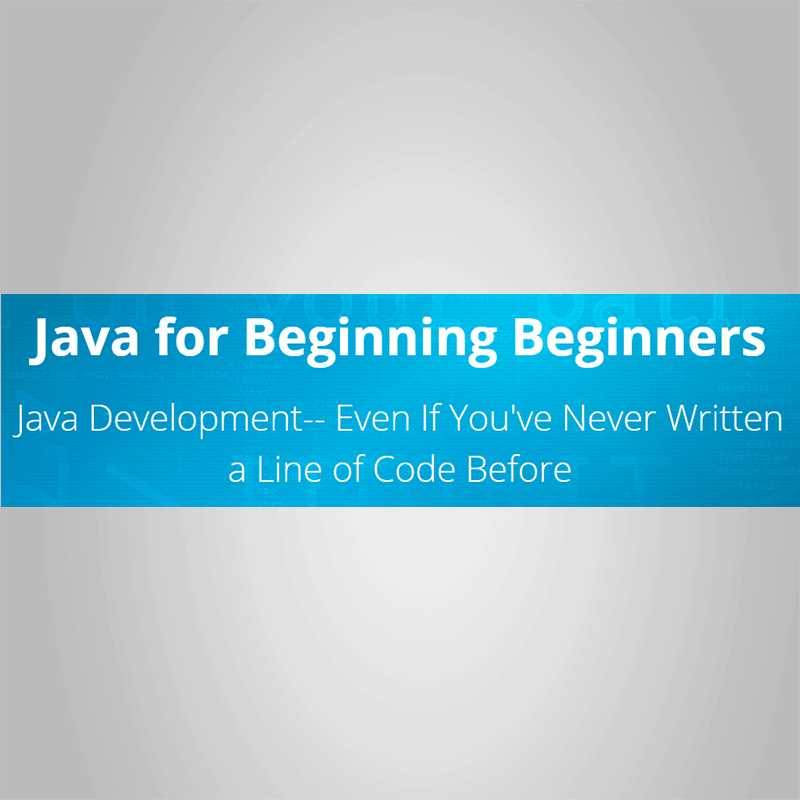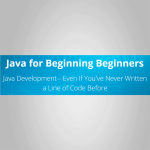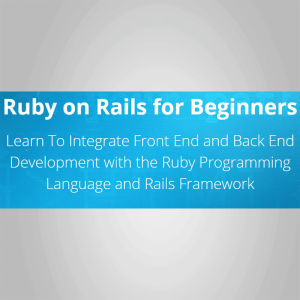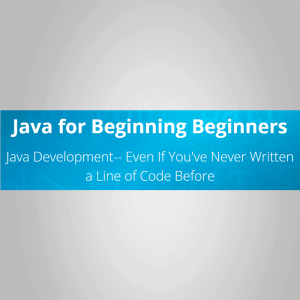Andrew Snyder-Spak – Java for Beginning BeginnersJava Development– Even If You’ve Never Written a Line of Code BeforeLearn Java even if you’ve never written a line of code before.Let’s face it– programming can be hardBut it’s certainly not impossible. In fact, here at LearnToProgram, we found just about anybody can learn to code. With a little bit of effort, time and this course you can be writing programs in the Java programming language.The problem with many so-called beginner’s courses is that they assume prerequisite knowledge that many don’t have. These courses use too much jargon and are overly complex for beginners. Java for Beginning Beginners is different.Especially designed for the total beginner– even someone who’s never written a line of code in their life– Java for Beginning Beginners doesn’t use complex jargon or assume any prerequisite knowledge. You’ll by obtaining the free tools you need to create Java programs, and then write very simple programs.Gradually, Andrew, your instructor will take you through the step-by-step process of adding new commands to your code vocabulary. By the end of this course you’ll be ready to study more advanced Java courses, or just write Java programs on your own, learning more a long the way.This course can be completed in less time than it takes to read a complex novel. You’ll stay engaged with interesting demonstrations and lectures and retain information by completing the lab exercises through out the course.If you’ve tried other courses but found them difficult to understand– or simply want the best experience for your first programming course, Java for Beginning Beginners is hard to beat!Your HostAndrew Snyder-SpakAndrew Snyder-Spak is a graduate of New York University where he studied Computer Science and Game Design, as well as Music. Andrew has always had a passion for Video Game Design and Computer Programming. ing at age 11, he began learning to create his own games and applications using GameMaker Studio and Visual Basic. In High School he expanded his studies by taking AP Computer Science, as well as every other programming related course offered. Once at NYU, he continued his studies while doing freelance video game prototyping on the side for some of his professors. Andrew has also done some research work with NYU’s Langone Medical Center, creating a functioning prototype of a concussion analysis tool using the Nintendo Wii bluetooth balance board. The proposed study would explore the possibility of using the Nintendo Wii Bluetooth Balance Board as an affordable alternative to the current industry standard balance board, which costs several thousand dollars. Andrew has also worked on a variety of projects and topics ranging from Web Design to iOS App Development. Currently Andrew is working with LearnToProgram.TV to help share his knowledge and teach a new generation aspiring computer programmers.EpisodesSection 1: Writing Your First ProgramWelcome to the Course (0:49)Obtaining the Tools of the Trade (3:48)Coding Your First Program (3:01)Compiling and Executing Java Command Line Programs (5:00)Lab Excercise (3:58)Lab Solution (6:55)Section 2: Input and OutputWelcome Back– Setting Expectations (0:49)Obtaining Input with a Scanner Object (9:09)Command Line Input with Different Data Types (7:27)Command Line Parameters (7:19)Output and Storage (10:24)Lab Excercise (4:30)Lab Solution (9:16)Section 3: Understanding VariablesSection Introduction (0:51)Variable Types (6:27)Declaring and Initializing Variables (6:42)Variables and Arithmetic (10:07)Fun with Strings (7:39)Lab Excercise (3:22)Lab Solution (9:45)Section 4: Conditionals and LoopsSection Introduction (0:46)Conditionals (9:44)Complex and Compound Conditional Statements (12:06)Iterating with While Loops (10:52)For Loops (5:38)Lab Excercise (2:58)Lab Solution (7:53)Section 5: Data, Data EverywhereSection Introduction (1:03)Arrays (6:10)Manipulating Arrays (10:05)ArrayList Objects– Arrays on Steroids (11:11)Lists, Hashtables and Generics (11:50)Lab Excercise (3:18)Lab Solution (7:50)Section 6: Putting It All Together: Object Oriented ProgrammingSection Introduction (0:42)The Class Object Relationship (6:42)Class Construction (7:10)Parent and Child Classes (12:57)Lab Excercise (8:08)Lab Solution (12:37)
 Beth Mosolgo-Clark – Project Management using Microsoft Project
₹3,154.00
Beth Mosolgo-Clark – Project Management using Microsoft Project
₹3,154.00
 Brad Hussey – How to Craft The Perfect Portfolio
₹3,320.00
Brad Hussey – How to Craft The Perfect Portfolio
₹3,320.00
Andrew Snyder-Spak – Java for Beginning Beginners
₹3,486.00






